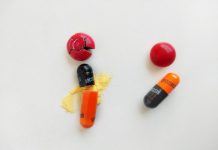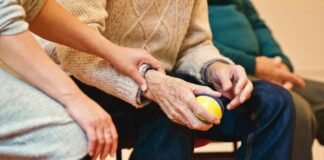
According to breastcancer.org, 1 in 8 women will develop invasive breast cancer over the course of her lifetime. At the start of this year, 232,340 new diagnoses were predicted in women. Research surrounding breast cancer has increased over the past two decades, causing fatalities to decrease. This can most likely be attributed to treatment advances, earlier detection through regular screening and increased awareness.
Still, this disease is the top killer in women when it comes to cancer. According to komenpugetsound.org, one woman is diagnosed with breast cancer every three minutes, and one of them is likely to die. Being aware of your family history of breast cancer, and your risk of developing the disease, is important in preventing yourself.
Doctors urge those with a family history of breast cancer to begin getting checked at a younger age. As women get older, the likelihood of developing breast cancer increases, regardless of whether it’s hereditary. There are usually three processes in checking for cancer: a clinical exam, mammogram, and ultrasound. In addition to getting tested by doctors on a yearly basis, women are also encouraged to perform self-exams at least once a month.
Performing self-exams can often be misleading, but doing it on a regular basis can help early detection. According to the Johns Hopkins Medical center, 40 percent of women detect breast cancer by feeling an irregular lump during self-exams. Self-exams may not always detect lumps, as not every case has tangible evidence, but it allows women to be familiar with how their breasts feel so when you do feel something irregular, you can alert your doctor.
According to the Breast Cancer Foundation website, use your fingers to move around your entire breast in a circular pattern moving from the outside to the center. Check the entire breast and into the armpit area to feel for any lump, thickening, or hardened knot. These self-exams can be performed in the shower.
Next, the Breast Cancer Foundation says to perform this exam in front of a mirror while raising one arm at a time overhead. Notice for any color changes in the skin, swelling, sampling, changes in nipples, or any contours. Don’t be alarmed if your breasts don’t match perfectly, as this is normal.
Last, the Breast Cancer Foundation website says to perform a third self-exam lying down. This is because the breast tissue spreads more evenly and will allow you to feel any lumps deeper than the very surface. Using your fingers, perform the same circular motions on the entire breast and armpit area.
By performing a self-exam once a month, women can be more in tune with how they feel. Paying attention to your body and its changes can help prevent any form of breast cancer. Always be sure to contact your doctor with any concerns.









![Daily Bite [Make]: Philly Cheesesteak Stuffed Bell Peppers](https://dashofwellness.com/wp-content/uploads/2013/01/Philly-Cheesesteak-Stuffed-Pepper-Daily-Bite-1-100x70.png)
